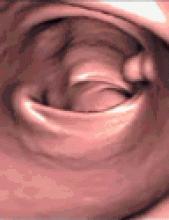Table 1.
Background and epidemiology: On August 5, 2005, the World Health Organization (WHO) posted its 27th update on the situation with avian influenza,1 along with a table of the cumulative number of confirmed human infections (Table 1).2 The relatively small number of confirmed cases understates the tremendous global resources and investigative efforts being channeled into ascertaining whether influenza A/(H5N1) will meet the 3 prerequisites for the start of a pandemic (Box 1).
The world was first alerted to the pandemic potential of this virus in 1997 when 18 people were seriously infected, 6 fatally, in the Hong Kong Special Administrative Region of China, coincident with outbreaks of highly pathogenic H5N1 in poultry on farms and in markets. The Hong Kong outbreak had 2 striking features. One was the presence of primary viral pneumonia in severe cases (typically, when pneumonia occurs in influenza cases, it is caused by a secondary bacterial infection). The other was its tendency to afflict healthy young adults and children. A rapid cull of Hong Kong's entire poultry population (1.5 million birds) within 3 days has been credited with diverting, or at least delaying, a human pandemic. The virus was then quiescent until December 2003, when reports of human infections recommenced across large areas of Asia (Table 1).2
Influenza A virus subtypes have been described as sloppy, capricious and promiscuous.1 This is because these subtypes lack a proofreading mechanism during viral replication, making them prone to small mutational errors — an adaptive mechanism that helps them to evade the defenses of the immune system. Through sequential infection of human or other mammals, the virus can acquire stepwise the changes needed to improve its transmissibility among humans. The virus also has a segmented genome of 8 genes that allows easy swapping of genetic material when a host (whether avian or mammalian) is coinfected with 2 different influenza viruses. If the reassorted virus that results can infect people, cause serious disease and persist in spreading easily from person to person, it will ignite a pandemic.1
So far, the H5N1 virus has not demonstrated easy transmissibility between animals and people or between persons. Massive culling efforts by thousands of workers, often inadequately protected, surprisingly resulted in no cases. In-depth investigations of 3 familial clusters reported in Viet Nam and Thailand so far indicate that the risk of human-to-human transmission appears very limited: although family members provided bedside care to infected people during a critical period of illness, all evidence suggests that, if human-to-human transmission took place at all, the chain of transmission ended after infection of a single other person.
More sobering data for assessing the pandemic potential of the virus comes from the changing ecology of the disease in animals. H5N1 has expanded its geographic range to poultry in Russia and Kazakhstan. Asymptomatic domestic ducks have recently been shown to excrete H5N1 in its pathogenic form and may play a silent, previously unsuspected role in viral transmission throughout Asia. An outbreak of H5N1 pneumonia in Thailand, afflicting 147 of 418 tigers fed raw chicken carcasses, indicates mammalian susceptibility and suggests that ingestion of raw infected birds could be a route of exposure. Also, detection of highly pathogenic H5N1 in dead waterfowl of species that typically act as the mildly affected reservoir for less pathogenic strains suggests that the virus is changing.
The fact that the virus is now firmly entrenched in the poultry populations in parts of Asia and that sporadic clusters of human cases are increasing in the absence of reported poultry outbreaks, suggests that the virus's potential to slip past extensive surveillance and control mechanisms and cause a pandemic is increasing.1
Clinical management: Interim guidelines on the clinical management of humans infected by influenza A/ (H5 N1) have been issued by WHO. They can be found online (at www.who.int/csr/disease/avian_influenza/guidelines/clinicalmanage/en).
Prevention: WHO has provided guidance for the timely sharing of specimens of new influenza strains to update WHO's diagnostic reagents and support timely vaccine development. Although vaccines are the first line of defence, when a pandemic arises there will be an anticipated, seemingly inevitable lag in production and supply as manufacturers hasten to formulate the vaccine and increase production capacity. Two mathematical simulation models of an emerging pandemic recently published in Science and Nature came to the same conclusions: a pandemic could be contained if the virus were detected quickly, if it did not spread too fast, if sufficient antiviral agents were deployed quickly and massively around the epicentre of the outbreak, and if strict quarantine and other nonmedical measures were also used.3









